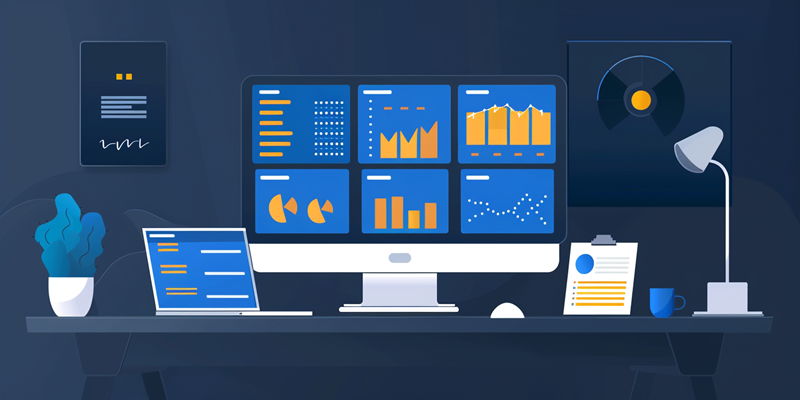Window functions are a transformative element in the realm of data science, offering a unique approach to perform a multitude of analytical tasks. These functions enable calculations across related sets of rows that are akin to those obtained from traditional spreadsheets. With their inherent capacity for precise data manipulation, window functions can streamline operations such as data aggregation, ranking, and statistical analysis, fostering more efficient and deeper data explorations.
Enhancing Data Analytics with Window Functions
Aggregate Calculations Without the Complexity
Gone are the days of cumbersome joins and subqueries for performing aggregate calculations. Window functions arrive as a savior, simplifying tasks like running totals and rolling averages without the complexities previously faced. For instance, one can use a window function to calculate a moving average within a data set, a process that otherwise would require convoluted SQL commands. This enhancement not only saves time but also maintains the queries’ clarity and manageability.
Sorting and Ranking with Precision
In the world of large datasets, sorting and ranking become critical tasks, and window functions are remarkably suited for this purpose. They endow data scientists with the ability to order data following diverse criteria, with precision and ease. A financial analyst, for example, could employ these functions to identify the top-performing stocks within a specific window without reshuffling the entire dataset. This precision leads to more accurate assessments and robust data interpretations.
Window Functions in Time-Series Analysis
Handling Time-Dependent Data
Window functions are indispensable in time-series analysis, enabling the examination and understanding of time-dependent data. They serve as an advanced tool for pinpointing patterns, changes, and potential irregularities in data over time. For industries such as finance, where timestamps are crucial, window functions help in constructing a clear narrative of data evolution, informing better decision-making and forecasting.
Detecting Patterns and Anomalies Over Time
The application of window functions shines bright in identifying trends and spotting outliers within time-series data. By analyzing varying windows of time, these functions unravel anomalous behavior that might indicate critical incidents or shifts in patterns. Through practical case studies, window functions have proven to be a formidable ally in detecting such anomalies, contributing to robustness in predictive modeling and analysis.
Advanced Statistical Analysis Using Window Functions
Delving Deeper into Data Distributions
Window functions allow analysts to delve deep into data distributions, adding a new dimension to explorative analysis. By leveraging these functions, one can discern not just averages but also the distribution of data within various segments. Such insights reveal hidden relationships and can pivot a company’s strategic direction based on its customers’ behavior or a product’s performance within certain demographic splits.
Beyond Basic Metrics: Uncovering Trends with Window Functions
Window functions reach beyond basic metrics to uncover intricate trends within datasets. Their analytical prowess is particularly noticeable when applied to scenarios that require understanding the ebb and flow of data points over different dimensions. In instances of complex datasets, window functions have time and again led to discovering fascinating insights that standard analyses might miss.
Window Functions Across Data Analytics Platforms
Streamlining Workflow Integration
The trajectory of data analysis tools is heavily influenced by the integration capabilities of window functions with SQL databases and analytics platforms. Their compatibility ensures a smooth transition within established workflows, thereby reducing the learning curve for analysts. The strategic incorporation of window functions not only streamlines complex analyses but also potentiates the full extent of data platforms.
Expanding Analytical Capabilities
Window functions are key in broadening the analytical capabilities of data scientists, presenting them with advanced methods to interrogate and interpret their data more effectively. As learning resources and platforms like Analytics Insight emerge, the opportunities for mastering these powerful functions become more accessible. In embracing window functions, data scientists can elevate their analytical acumen, securing a competitive advantage in the data-driven landscape.

